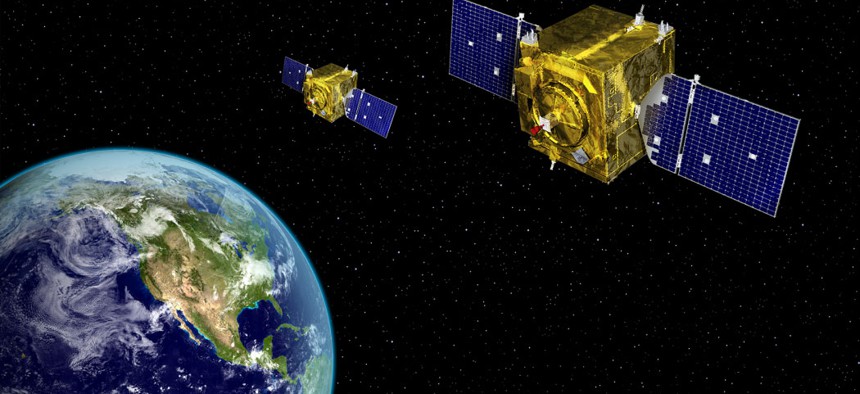
Plan for satellite-repairing robots takes the next step
DARPA's program calls for a public-private effort to develop a robotic vehicle that can inspect, repair and upgrade GEO satellites that are otherwise out of reach.
Military researchers want to join with industry to build a robotic space vehicle capable of inspecting, repairing and upgrading high-flying satellites that are out of the reach of conventional spacecraft. The project could not only make satellites in geosynchronous, or GEO, orbit more effective, but could also reduce costs.
The plans calls for developing a public-private partnership that would eventually develop a commercial space robotics enterprise in which robotic space vehicles would provide services to military, government and commercial satellites in GEO orbit, according to the Defense Advanced Research Projects Agency.
GEO satellites orbit at 22,000 miles above the Earth, beyond the ability of current technologies to reach them. As a result, those satellites—and there hundreds of them—are loaded up with backup systems and extra fuel before launch, which adds to their expense. But things still can go wrong and payloads can sometimes become obsolete, causing some satellites to go out of service ahead of their planned lifetimes.
In the program, called Robotic Servicing of Geosynchronous Satellites (RSGS), DARPA will develop a modular hardware and software toolkit that could then be coupled with a privately developed spacecraft into the robotic service vehicle, which would work on a fee-for-service basis, the agency said in a release. A key element will a dexterous robotic arm DARPA has developed called FREND, which has multiple joints and is designed to connect with vessels that aren’t built for docking. DARPA said it plans to add advanced machine-vision algorithms that will allow for supervised robotic operations.
DARPA will contribute the robotics technology along with a government-provided launch, DARPA said. A commercial partner would provide a satellite to carry the robotic vehicle into space, integrate the payload and contribute the mission operations center and staff. DARPA said it hopes to have a demonstrator in orbit in five years.
“The ability to safely and cooperatively service satellites in GEO would vastly expand public and private opportunities in space. It could enable entirely new spacecraft designs and operations, including on-orbit assembly and maintenance, which could dramatically lower construction and deployment costs while extending satellite utility, resilience and reliability,” RSGS program manager Gordon Roesler in DARPA’s release. “Commercial and government space operators have sought this capability for decades. By investing together, we can achieve a capability that would be extremely challenging to do individually.”
The program has been in the works for a while. DARPA researched similar technologies as part of its Phoenix program, which researched space robotics while looking for new satellite architectures. In October 2014, the agency issued a Request for Information http looking for technical, security and business ideas on the project. Phoenix was later revamped into the current project.